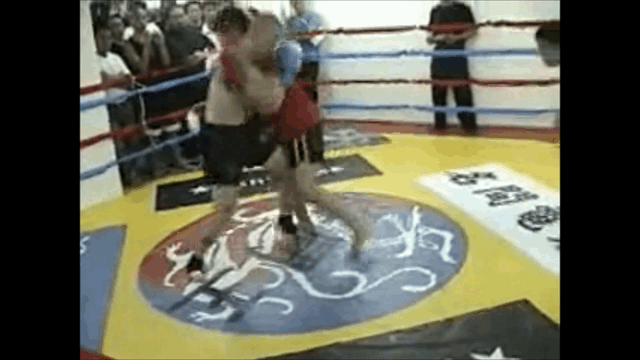Warning, The Geezer has some ideas to debate about "WT" stances and steps. Here's Chapter 1:
Some you here have had experience in the WT or WingTsun branch of the Ip Man lineage of Leung Ting. This was the lineage that I trained, and one of it's most distinguishing traits is its peculiar, ....perhaps even extreme take on the WC stance.
Many branches of WC favor a somewhat back-weighted stance when posing one foot forward (as compared to the square-on Yee Gee Kim Ma or "Character Two" / "IRAS" stance). Typically that would be wighting the rear leg 60-70%. In the WT branch, the stance is said to be back weighted 100%. All the bodies "dead" weight is placed on the rear foot and only a light "pressure" is put on the front foot.
The best descriptive analogy heard was that of a man sitting on the edge of a bar stool with one leg extended onto the floor. His dead weight is carried 100% by the stool yet he can put pressure on the floor. Since the stool carries all his weight, he can move or lift his extended leg up off the floor at will, or set it back down with pressure to scoot or adjust the position of his stool. Like this old guy:

Now the real challenge comes when you are told to maintain this weighting when advancing. You are told to extend your front foot, grip the ground and literally drag your whole body forward without unweighting or lifting up the rear, weight-bearing leg at all.
At first this seems an impossible task. Later, making some weighting adjustments most students actually do develop a certain degree of ability to move like this. Some remain clumsy and slow. Others integrate what I call "compensatory techniques" and ultimately come up with something that, while not quite totally back-weighted, is very close to this model yet also functional. In some cases, more than functional. Even explosive. Watch this guy at 2:28-2:30, slow it down to 50% and watch how his rear foot stays on the ground.
So here are a few questions, especially for anybody who spent any time training this in WT.
1. Were you able to make this stance work for you at all?
2. If so, what do you feel were it's advantages and disadvantages.
3. Do you still use this approach, and if so have you made any personal modifications?
Some you here have had experience in the WT or WingTsun branch of the Ip Man lineage of Leung Ting. This was the lineage that I trained, and one of it's most distinguishing traits is its peculiar, ....perhaps even extreme take on the WC stance.
Many branches of WC favor a somewhat back-weighted stance when posing one foot forward (as compared to the square-on Yee Gee Kim Ma or "Character Two" / "IRAS" stance). Typically that would be wighting the rear leg 60-70%. In the WT branch, the stance is said to be back weighted 100%. All the bodies "dead" weight is placed on the rear foot and only a light "pressure" is put on the front foot.
The best descriptive analogy heard was that of a man sitting on the edge of a bar stool with one leg extended onto the floor. His dead weight is carried 100% by the stool yet he can put pressure on the floor. Since the stool carries all his weight, he can move or lift his extended leg up off the floor at will, or set it back down with pressure to scoot or adjust the position of his stool. Like this old guy:
Now the real challenge comes when you are told to maintain this weighting when advancing. You are told to extend your front foot, grip the ground and literally drag your whole body forward without unweighting or lifting up the rear, weight-bearing leg at all.
At first this seems an impossible task. Later, making some weighting adjustments most students actually do develop a certain degree of ability to move like this. Some remain clumsy and slow. Others integrate what I call "compensatory techniques" and ultimately come up with something that, while not quite totally back-weighted, is very close to this model yet also functional. In some cases, more than functional. Even explosive. Watch this guy at 2:28-2:30, slow it down to 50% and watch how his rear foot stays on the ground.
So here are a few questions, especially for anybody who spent any time training this in WT.
1. Were you able to make this stance work for you at all?
2. If so, what do you feel were it's advantages and disadvantages.
3. Do you still use this approach, and if so have you made any personal modifications?

